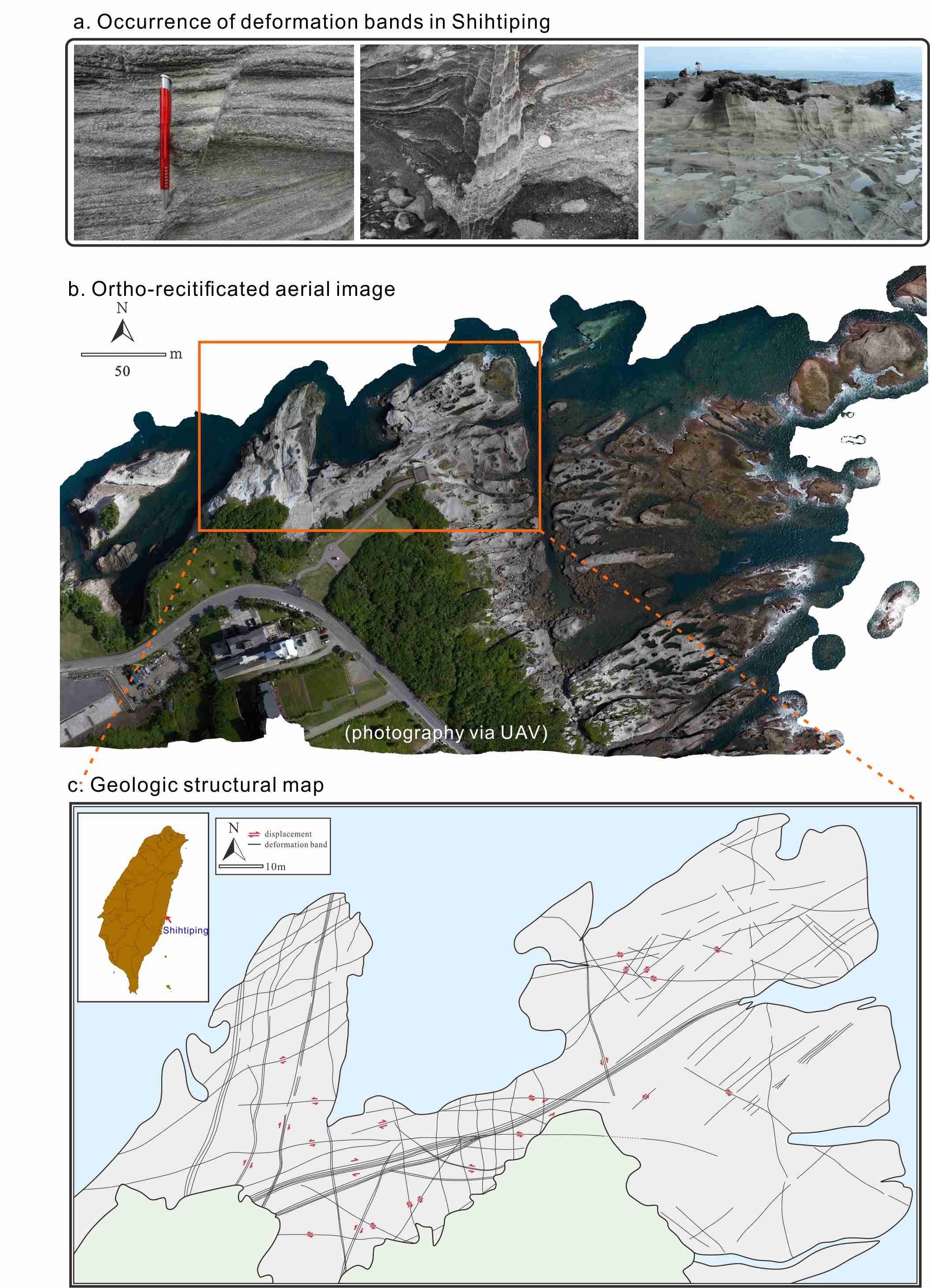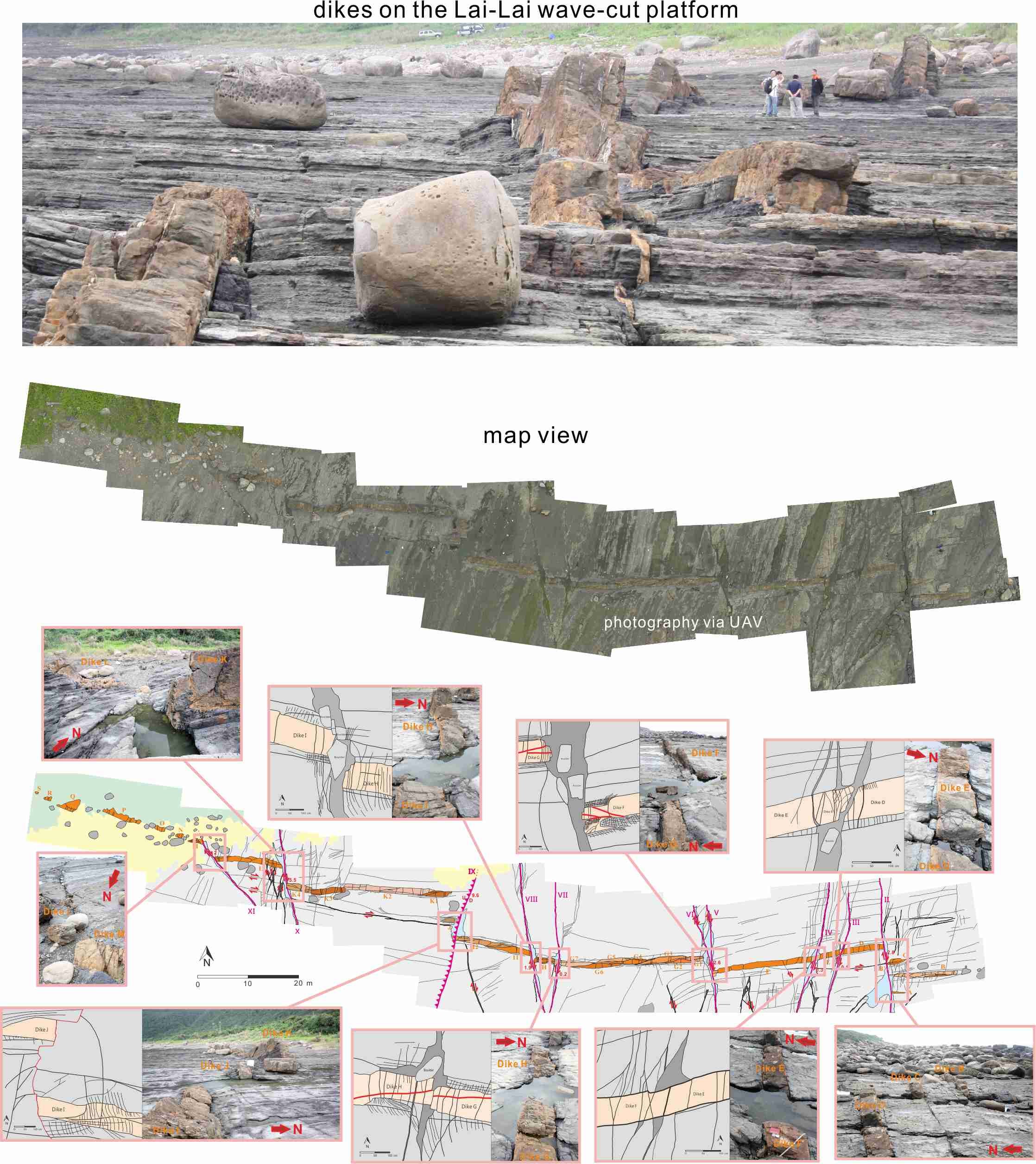Meso-scale geologic structures
|
Collaborators:
Geologic structural analysis : Lo, Wei (Institute of Mineral Resources Engineering, National Taipei University of Technology) Geodetic observation and aerial image processing : Han, Jen-Yu (Department of Civil Engineering, National Taiwan Univesity) Geophysical exploration : Chen, Chien-Chih (Department of Earth Sciences, National Central University) Since 2012, my students and I worked on a few kinds of meso-scale geologic structures on well-exposed outcrops. Except doing field work in a traditional way, we also used high-tech devices such as unmanned aerial vehicle (UAV) and ground LIDAR, to document these geologic structures. Twofold purpose of this research is to train students to be a good observer whose capability is essential for a structural geologist and to characterize these structures for further studies on their formation mechanics and mechanisms. We have studied deformation bands in the Shihtiping marine platform composed of mainly Miocene ignimbrite (Figure 1) and lamprophyric dikes within the Oligocene Tatungshan formation on the Lai-Lai wave-cut platform in the northeastern coast of Taiwan (Figure 2) We find that the deformation bands in Shihtiping were formed by compaction, shear and cataclasis after the syncline or simultaneously. They can be classified as compactional shear band in terms of kinematics and cataclastic band in terms of mechanics. They do not accompany the neighboring Takangkou Fault but reflect the regional paleostress. For the study of lamprophyric dikes, we conclude that magma ascended along en-echelon joints and solidified into three dikes in 'Tatungshan formation' at depth of 2.6 kilometers. There are west dipping reverse faults and vertical right-lateral strike-slip faults in dikes. The strike-slip faults intersect with dikes in an acute angle, which makes the dikes appear as horizontal duplex structures. The structural evolution of dikes in Lailai platform are: 'Tatungshan formation' formed in passive continental shelf and en-echelon joints formed in late Oligocene; magma ascended along en-echelon joints and en-echelon dikes formed in late Miocene. After the Penglai orogeny took place in Pliocene, reverse faults and duplex structures took place in dikes. Then the N-S-trending right-lateral strike-slip faults cut the dikes and displaced them. At last, tectonic uplift and unroofing formed extension joints. Dikes are exposed in right-stepping en-echelon form in the platform now. |

|
| Figure 1. Documentation of deformation bands in Shihtiping, eastern central Taiwan |

|
| Figure 2. Documentation of dikes and their associated structrues in Lai-Lai, Taiwan |


